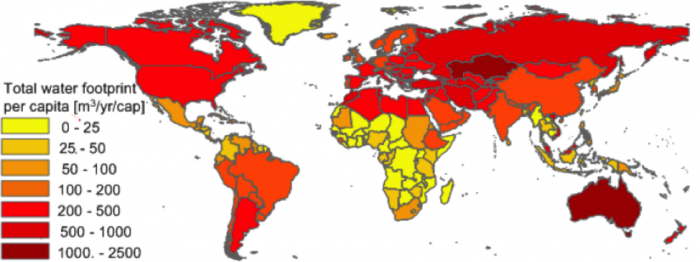Virtual Water
How much water do you eat?
Water is essential to growing food and every bite of food we consume required water to grow, process, and transport. The water necessary to grow, process, and transport food is often referred to as virtual water or embedded water. Virtual water is the entire amount of water required to produce all of the products we use, including our mobile phones and cotton t-shirts. But a global assessment of virtual water reveals that the majority of water that we consume is in the food we eat. If we total up all of the virtual water embedded in everything we use and eat, we can estimate our total water footprint. Water footprints can be used to provide insights into how much water is used every day in all of our activities including producing our food. For example, Figure 4.1.12 shows the amount of water used per person around the globe associated with wheat consumption. When you eat food imported from another region, you are eating the water of that region. The apple from New Zealand, grapes from Chile, and lettuce from California all required water to grow and by consuming those products you’re "eating" that virtual water. The concepts of virtual water and water footprints can be powerful tools for businesses and governments to understand their water-related risks and for planning purposes (water footprint network).

Check Your Understanding
Scroll through this infographic explaining virtual water and then answer the questions below.
